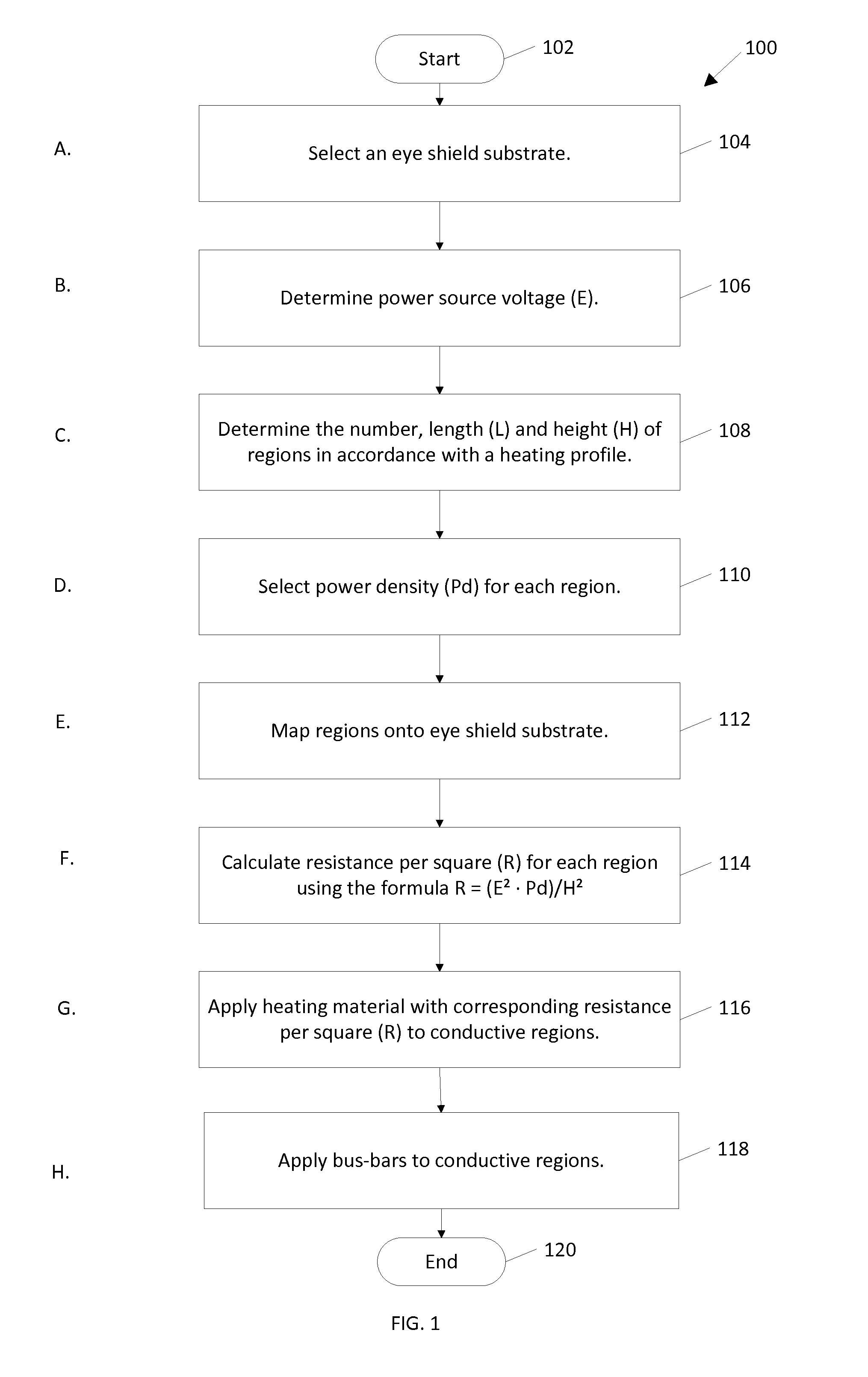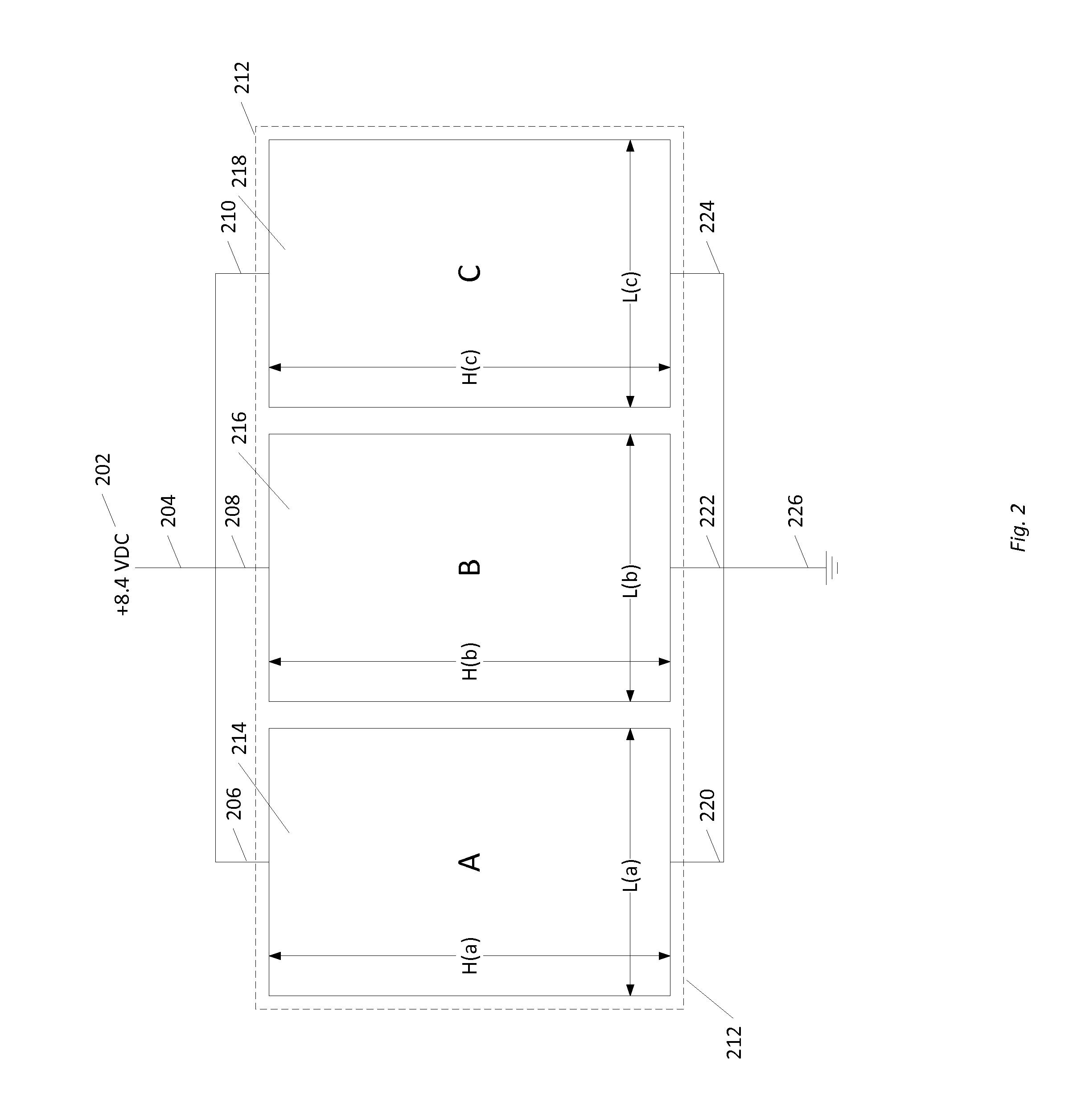Multiregion heated eye shield
a multi-region, eye shield technology, applied in underwater equipment, instruments, transportation and packaging, etc., can solve the problems of inability to customize the heating method, inability to teach the method of employing a thin-film heating system, and inability to prevent fogging, so as to prevent fogging, prevent hot spots on the eye shield, and eliminate undesirable hot spots
- Summary
- Abstract
- Description
- Claims
- Application Information
AI Technical Summary
Benefits of technology
Problems solved by technology
Method used
Image
Examples
Embodiment Construction
[0043]Referring to FIG. 1, a method 100 starting at origination location 102 for adapting an optically-transparent eye shield for use in an electrical circuit to prevent fogging of the eye shield while preventing hot spots on the eye shield is disclosed. The method 100 comprises the following steps after starting at 102: selecting a nonconductive substrate at 104 defining an optically-transparent eye shield and an outer periphery of the eye shield; determining the power source voltage at 106, which is preferably a dc battery voltage source (e.g., 8.4 VDC which is the output of two 4.2 VDC, fully-charged, lithium-ion cells), but which may also be an output from a PWM driver; heating profile for defining a heating pattern within the outer periphery of the eye shield; determining at 108 the number of a plurality of regions and the size of each region (whether electrically-isolated or contiguous) in accordance with a heating profile; selecting at 110 a desired power density (Pd) for eac...
PUM
 Login to View More
Login to View More Abstract
Description
Claims
Application Information
 Login to View More
Login to View More - R&D
- Intellectual Property
- Life Sciences
- Materials
- Tech Scout
- Unparalleled Data Quality
- Higher Quality Content
- 60% Fewer Hallucinations
Browse by: Latest US Patents, China's latest patents, Technical Efficacy Thesaurus, Application Domain, Technology Topic, Popular Technical Reports.
© 2025 PatSnap. All rights reserved.Legal|Privacy policy|Modern Slavery Act Transparency Statement|Sitemap|About US| Contact US: help@patsnap.com



